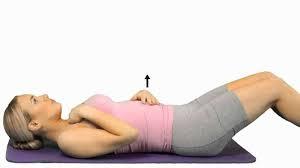Breathwork
Breathwork is not the same as mindfulness. Mindfulness involves passive observation of the breath, whereas breathwork requires you to actively change the way you breathe.
Breathwork includes ensuring you breath with your diaphragm, rather than the movement of your chest. It will fill your lungs with more air while also slowing the pace of your breathing.
321
607 reads
CURATED FROM
IDEAS CURATED BY
Friend of animals everywhere. Hardcore internet enthusiast and avid reader. My favorite topic is how to live a healthy life
The idea is part of this collection:
Learn more about health with this collection
Practicing empathy in relationships and communication
Understanding the importance of balance in personal and professional life
Defining your path in life
Related collections
Similar ideas to Breathwork
Deep breathing
- Sit or stand with your elbows slightly back. This allows your chest to expand more fully.
- Inhale deeply through your nose.
- Hold your breath as you count to 5.
- Release the air via a slow, deep exhale, throu...
Breathing Techniques for Side Pain
Practicing deep “belly breathing” can reduce the stress on the supporting ligaments of the diaphragm and can help relieve side stitches.
Belly breath: Lie down on the floor and place a hand on your belly. Breathe deeply. If you feel your hand rise and fall slightly with yo...
A simple exercise for calm
It's called box breathing or four-square breathing.
Here's how it works:
- Breathe in for four seconds.
- Hold the air in your lungs for four seconds.
- Exhale for four seconds.
- Hold your breath, lungs emptied, for four seconds.
Box breathi...
Read & Learn
20x Faster
without
deepstash
with
deepstash
with
deepstash
Personalized microlearning
—
100+ Learning Journeys
—
Access to 200,000+ ideas
—
Access to the mobile app
—
Unlimited idea saving
—
—
Unlimited history
—
—
Unlimited listening to ideas
—
—
Downloading & offline access
—
—
Supercharge your mind with one idea per day
Enter your email and spend 1 minute every day to learn something new.
I agree to receive email updates
